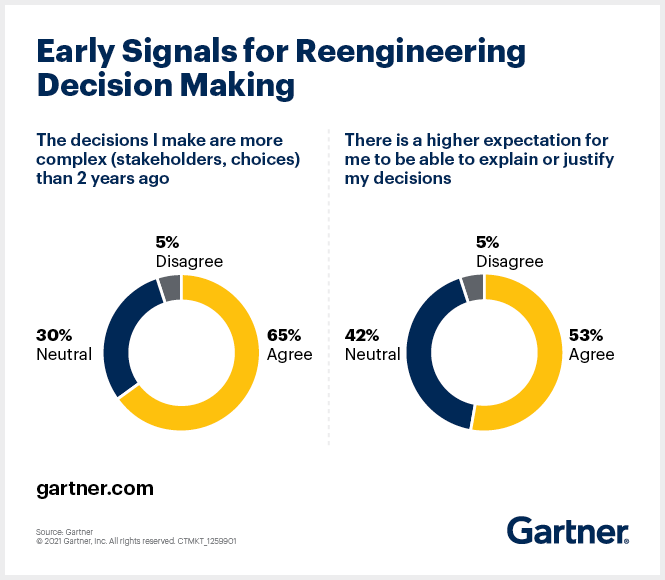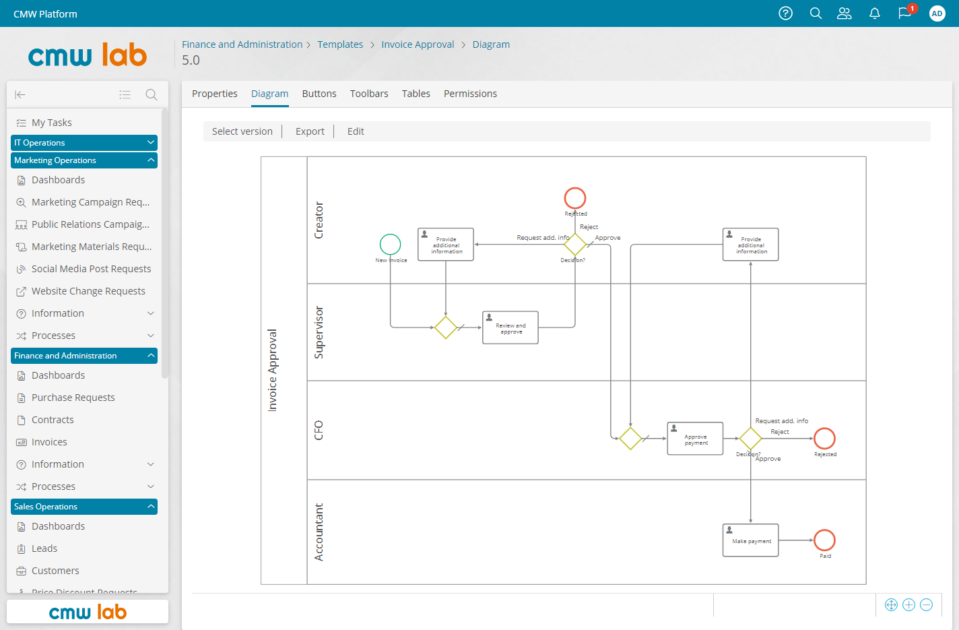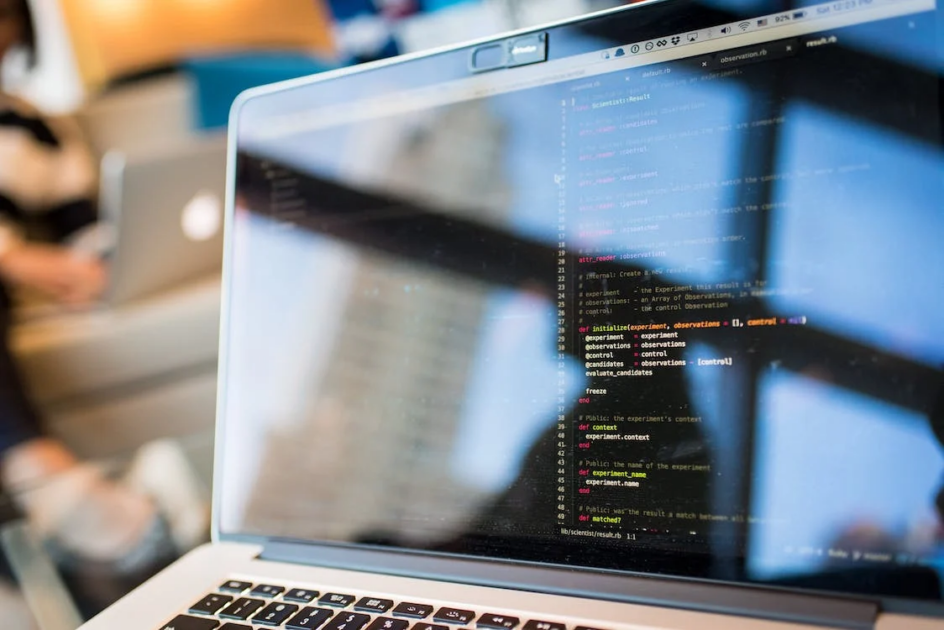A renaissance in corporate operations has been brought about by the symbiotic interaction between robotics and artificial intelligence (AI) in the dynamic field of technology. The combination of these two revolutionary technologies has transformed corporate operations by creating new opportunities for innovation and improving efficiency.
CMW Lab, a low-code BPM software developer, describes how AI and robotics are reshaping the very fabric of business operations.
AI and Robotics: A Synergistic Alliance
By combining robotics and AI, businesses can now achieve previously unheard-of levels of automation and intelligence, blurring the lines between the real and virtual worlds. The combination of these technologies has ushered in a new era in which software is capable of doing sophisticated data analysis to make well-informed decisions in addition to routine duties.
According to recent statistics from Nielsen Norman Group, businesses that have implemented AI and robotics in their operations have experienced an average increase in efficiency by 66% and, according to Fortune, a reduction in annual costs by 10%. This underscores the tangible impact of this alliance on the bottom line.

This statistical finding applies to a wide range of industries, including finance, manufacturing, healthcare, logistics. The integration of AI and robotics has become a catalyst for change, transcending the traditional boundaries of what was once thought possible in the realm of business operations.
The synergy between AI and robotics has elevated business operations to a realm where software are not just tools but strategic partners in decision-making processes. We see great examples among our clients using CMW Platform where this dynamic duo has become the driving force behind the evolution of operational efficiency.
Michael Donaghey, CCO at CMW Lab.
Elevating Efficiency Through Intelligent Automation
Traditional automation was synonymous with rule-based processes, often limited to repetitive and mundane tasks. But as robotics and artificial intelligence have advanced, the field of automation has changed to become one of adaptive automation. AI-enabled machines can now recognize patterns, adjust to changing conditions, and continuously improve operations in real-time.
Consider the example of a global yacht manufacturing company that employs AI-driven process automation in its warehouse operations. The system not only automates the sorting and distribution of equipment between different construction projects but also adapts to fluctuations in demand, optimizing the supply chain. This adaptability ensures that the company can respond dynamically to market trends, reducing bottlenecks and enhancing overall efficiency.
The ability of AI and robotics to adapt and optimize processes in real-time is a game-changer. It’s not just about automating tasks anymore; it’s about creating a single platform where machines collaborate seamlessly with the business professionals, augmenting productivity and decision-making.
Michael Donaghey on the transformative impact of adaptive automation.
Real-world examples of this impact can also be observed in sectors such as real estate, where the implementation of even simple process automation has resulted in 3 times reduction in document processing time, allowing brokers to focus on more strategic and value-added tasks.
Cognitive Insights in Decision-Making
A Gartner survey shows that 65% of decisions business representatives have to make now are more complex — more stakeholders or variables are included — than 2 years ago. Decision-making doesn’t keep up with the speed of the context-changing in which business decisions are being made today.

The infusion of AI into business operations brings cognitive capabilities that extend far beyond simple automation. Machine learning algorithms sift through vast datasets, identifying patterns, trends, and anomalies that might elude human analysis. This cognitive insight empowers businesses to make informed decisions with the help of BPM software that unites all the new technologies into a single ecosystem, driving strategies that are not just reactive but proactive.
Recent studies reveal that businesses leveraging AI in decision-making processes experience a significant increase in accuracy, leading to a 40% improvement in overall performance. This is a testament to the invaluable role that AI plays in shaping business strategies based on real-time and predictive insights.
The ability of AI to sift through massive datasets and extract meaningful patterns is invaluable. It not only aids in identifying trends but also enables businesses to anticipate future scenarios, allowing for proactive decision-making.
The implementation of AI-driven analytics in a multinational financial institution serves as a prime example. By analyzing customer behavior and market trends in real-time, the system not only identifies potential risks but also recommends strategic moves to capitalize on emerging opportunities. This level of insight goes beyond the capabilities of traditional analytics, providing a competitive edge in a fast-paced market.
The Human-Machine Collaboration Paradigm
Contrary to apprehensions surrounding job displacement, the alliance between AI and robotics is not aimed at replacing human workers; instead, it seeks to augment their capabilities. The future of business operations lies in a harmonious collaboration where humans and intelligent machines work together as partners.
The future of business operations is not about humans versus machines; it’s about humans working alongside intelligent machines. AI and robotics are not here to take jobs away; they are here to redefine roles, allowing humans to focus on tasks that require creativity, critical thinking, and emotional intelligence.
Michael Donaghey
AI’s creative aptitude, with its capacity for creative thinking and pattern recognition, has become a prized asset, especially in sectors demanding innovation. On the other hand, RPA’s precision and efficiency in navigating repetitive tasks have positioned it as a valuable tool for optimizing workflows.
However, a crucial point often overlooked is that while AI can generate creative insights and RPA can execute predefined tasks, neither possesses the intrinsic capability to independently architect comprehensive processes. The synergy of AI and RPA brings transformative results, but the critical point is the human touch.
The realization of the full potential of AI and RPA often finds its canvas in Business Process Management (BPM) platforms. These platforms serve as the digital stage where the interaction of human intellect and machine precision produces transformative results.
Within BPM platforms, human professionals don the hat of orchestrators, designing, customizing, and optimizing complex workflows. BPM platform, under the adept control of human professionals, becomes the nexus where customization and adaptability thrive. Human operators (or citizen developers) are indispensable in tailoring AI algorithms and configuring RPA bots to align with specific business needs.

In the realm of business operations, the synergy between human control and machine execution emerges as the catalyst for real and tangible results. The collaborative paradigm recognizes that it is the guidance and customization by human professionals that transforms AI and RPA into a dynamic and responsive system.
Real-world statistics emphasize the transformative impact of this collaboration. According to an IBM survey, 61% of businesses that actively integrated human-guided automation and RPA solutions witnessed reduction in costs and 72% – increased accuracy of work. These figures underscore the tangible benefits of harmonizing human intelligence with machine precision in operational workflows.
In essence, the Human-Machine Collaboration Paradigm is not just about automating and executing tasks; it is about making an effective synergy where the unique strengths of AI, RPA, and human professionals harmonize to create a transformative operational ecosystem.
As businesses move forward into an era defined by technological integration, the collaborative prowess of humans and machines stands as the beacon for innovation, efficiency, and enduring success.
Challenges on the Horizon: Addressing Ethical and Security Concerns
The integration of AI and robotics into business operations brings forth its set of challenges. Ethical considerations and privacy concerns are among the foremost issues that demand careful attention. And the specter of security threats looms large.

The interconnected nature of these technologies and their reliance on vast datasets make them susceptible to a range of cyber threats, necessitating a comprehensive and adaptive security infrastructure.
- Data Privacy: The vast amounts of data processed by AI systems present a lucrative target for cybercriminals. Ensuring robust data privacy measures is imperative to safeguard sensitive information. Encryption, secure data storage, and adherence to privacy regulations are critical components of a comprehensive data protection strategy.
- Cyberattacks on AI Models: Adversarial attacks, wherein malicious actors manipulate input data to deceive AI models, pose a significant security risk. Businesses must invest in developing resilient AI models that can withstand such attacks. Regular testing and updates to AI algorithms are crucial to maintaining their integrity in the face of evolving cyber threats.
- Unauthorized Access to Robotics Systems: The integration of robotics into physical operations introduces new security challenges. Unauthorized access to robotic systems can have tangible and immediate consequences, ranging from disruptions in manufacturing processes to safety hazards. Implementing stringent access controls, regular security audits, and continuous monitoring are essential to mitigate these risks.
- Supply Chain Vulnerabilities: Global supply chains are interconnected, which creates vulnerabilities that hackers can take advantage of. To guarantee end-to-end security, businesses need to evaluate and strengthen the cybersecurity safeguards across their whole ecosystem, including partners and suppliers.
Addressing security concerns demands a proactive and dynamic approach. Businesses investing in cutting-edge cybersecurity technologies, conducting regular risk assessments, and fostering a cybersecurity culture that involves employees at all levels will succeed.
Conclusion
In conclusion, the convergence of AI and robotics represents a seismic shift in the landscape of business operations. Recent statistics, real-world examples, and expert insights collectively affirm that the impact of this transformation is not just theoretical; it is measurable and transformative.
At the same time AI and robots on their own can’t be as effective as controlled and guided by business professionals. And maximum business effectiveness of these emerging technologies can be reached within a single digital transformation environment represented by BPM platforms.
The secret to helping businesses succeed in this age of unprecedented fast technical innovation is to cultivate a culture of constant learning and adaptability. Adopting the symbiotic interaction between humans and machines is not an option; it is a must to maintain competitiveness in the dynamic corporate environment.
Fundamentally, the ability of AI and robots to revolutionize company operations goes beyond simple task automation; rather, it redefines the fundamental principles of how companies function and prosper in the digital era. The businesses who take advantage of this technology revolution will surely become the trailblazers; the journey has only just begun.

